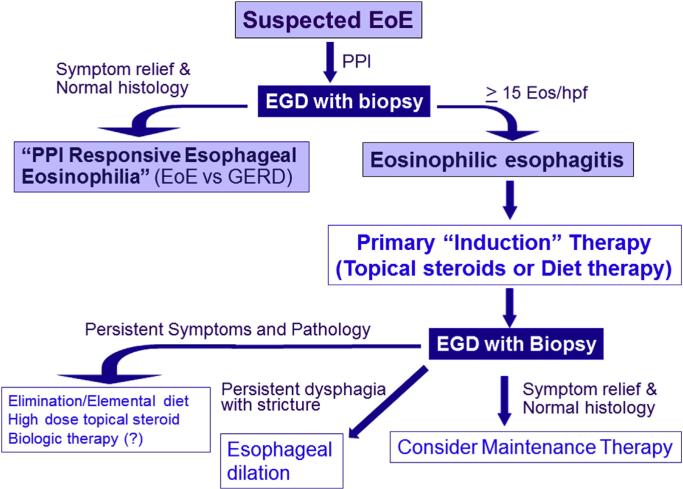Fig. 2.
Suggested management algorithm for eosinophilic esophagitis. Patients presenting with esophageal symptoms and esophageal eosinophilia are suspected of having eosinophilic esophagitis. A treatment trial of proton pump inhibition is followed by an upper endoscopy with proximal and distal esophageal biopsies. Patients demonstrating histologic remission on proton pump inhibition are termed “PPI-responsive esophageal eosinophilia” to acknowledge the controversies in distinguishing GERD from eosinophilic esophagitis. For patients with persistent symptoms as well as endoscopic and histologic evidence of eosinophilic esophagitis, primary, “induction” therapy with either topical steroids or dietary elimination is initiated. A follow up endoscopy with biopsy is used to assess resolution of the endoscopic and pathologic alterations. Patients who do not respond to primary therapy are then candidates for alternative therapies including elemental diets, high dose topical steroids and novel therapeutics. Esophageal dilation is an effective method to address fibrostenotic consequences of eosinophilic esophagitis.

